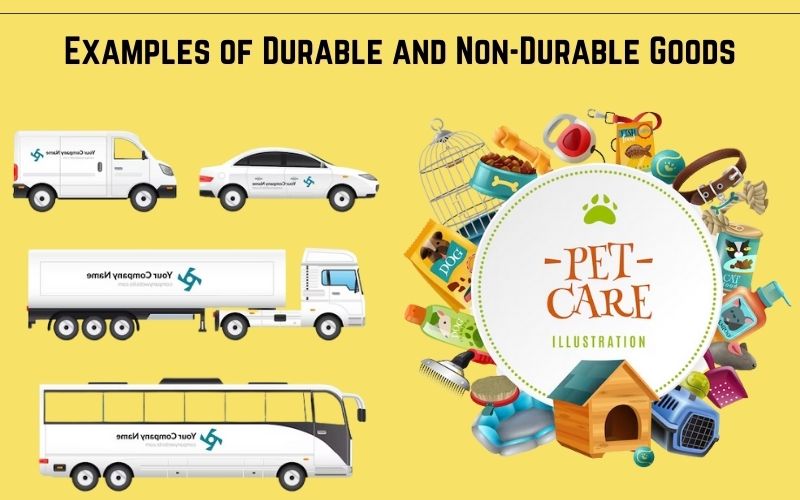Ever wondered why some things seem to last forever while others disappear in a blink? In the world of economics, there’s a simple explanation: durable goods and non-durable goods. These categories, based on lifespan and usage, shape our shopping habits and even the health of the economy.
Durable Goods
Durable goods refer to tangible products or commodities designed for long-term use, characterized by their ability to withstand repeated usage over an extended period. These items typically have a longer lifespan and are considered long-lasting assets within the realm of consumer goods.
Durable goods often include products such as appliances, furniture, vehicles, electronics, machinery, and other tangible items that provide utility over an extended duration. The purchase of durable goods is usually seen as an investment due to their extended usability and resistance to rapid wear and tear.
Think of a sturdy oak table passed down through generations. That’s a classic example of a durable good. These are items designed to withstand regular use for at least three years, often much longer. They provide long-term value and utility, making them an investment rather than an expense.
Examples of Durable Goods
- Vehicles: Cars, trucks, motorcycles, bicycles, boats, airplanes
- Appliances: Refrigerators, washers, dryers, ovens, dishwashers, air conditioners, vacuum cleaners
- Furniture: Sofas, beds, dressers, tables, chairs, bookshelves, outdoor furniture
- Electronics: TVs, computers, laptops, tablets, smartphones, cameras, gaming consoles
- Tools and equipment: Power tools, hand tools, gardening tools, camping gear, sports equipment, musical instruments
- Building materials: Lumber, bricks, concrete, roofing materials, windows, doors
- Home improvement: Flooring, siding, decks, fences, appliances, home security systems
- Jewelry: Fine jewelry, watches, accessories
- Collectibles: Antiques, artwork, rare books, coins, stamps
- Hobby equipment: Photography equipment, musical instruments, crafting supplies, sports equipment
Non-Durables Goods
Non-durable goods, often referred to as consumables, are products designed for short-term use with a limited lifespan. These goods are intended to be consumed or used up in one or a few applications. Unlike durable goods, which are built to withstand repeated use over an extended period, non-durable goods are generally characterized by their perishable nature, quick depletion, or brief utility.
These goods are consumed or utilized in a relatively short timeframe, and their value diminishes rapidly with each use. Non-durable goods span a wide range of categories, including food, personal care items, clothing, and other products that fulfill immediate needs or preferences. The transient nature of non-durable goods contrasts with the longevity and endurance associated with durable goods, creating a fundamental distinction in the world of consumer goods.
Unlike their durable counterparts, non-durable goods are meant for short-term use. They’re often consumed in a single use or lose their value quickly, with a lifespan typically under three years. Think of them as the “fuel” for our daily lives.
Examples of Non-Durable Goods
- Food and beverages: Fruits, vegetables, meat, dairy, prepared meals, snacks, soft drinks, coffee, tea
- Cleaning products: Laundry detergent, dish soap, all-purpose cleaner, disinfectants, air fresheners
- Paper products: Toilet paper, paper towels, tissues, napkins, printer paper
- Clothing and footwear: Underwear, socks, t-shirts, jeans, dresses, shoes, boots
- Cosmetics and toiletries: Shampoo, conditioner, soap, deodorant, toothpaste, makeup, perfume
- Office supplies: Pens, pencils, paper, notebooks, folders, printer cartridges
- Pet supplies: Food, treats, toys, bedding, litter
- Light bulbs and batteries: Incandescent, fluorescent, LED bulbs, AA, AAA, C, D batteries
- Medical supplies: Bandages, gauze, adhesive tape, over-the-counter medications
- Entertainment consumables: Movie tickets, books, magazines, streaming subscriptions
Why Does It Matter?
Understanding the difference between durable and non-durable goods is more than just academic. It affects how we budget, how businesses operate, and even the economic climate. Durable goods purchases tend to be larger and less frequent, while non-durables are smaller but more recurrent. This impacts spending patterns and the overall flow of money in the economy.
So, next time you’re shopping, consider the lifespan of what you’re buying. Are you investing in a long-lasting companion or picking up a fleeting necessity? The answer may surprise you, and it can even help you make smarter choices for your wallet and the world around you.
Do you have any interesting examples of durable or non-durable goods in your life? Share them in the comments below!

